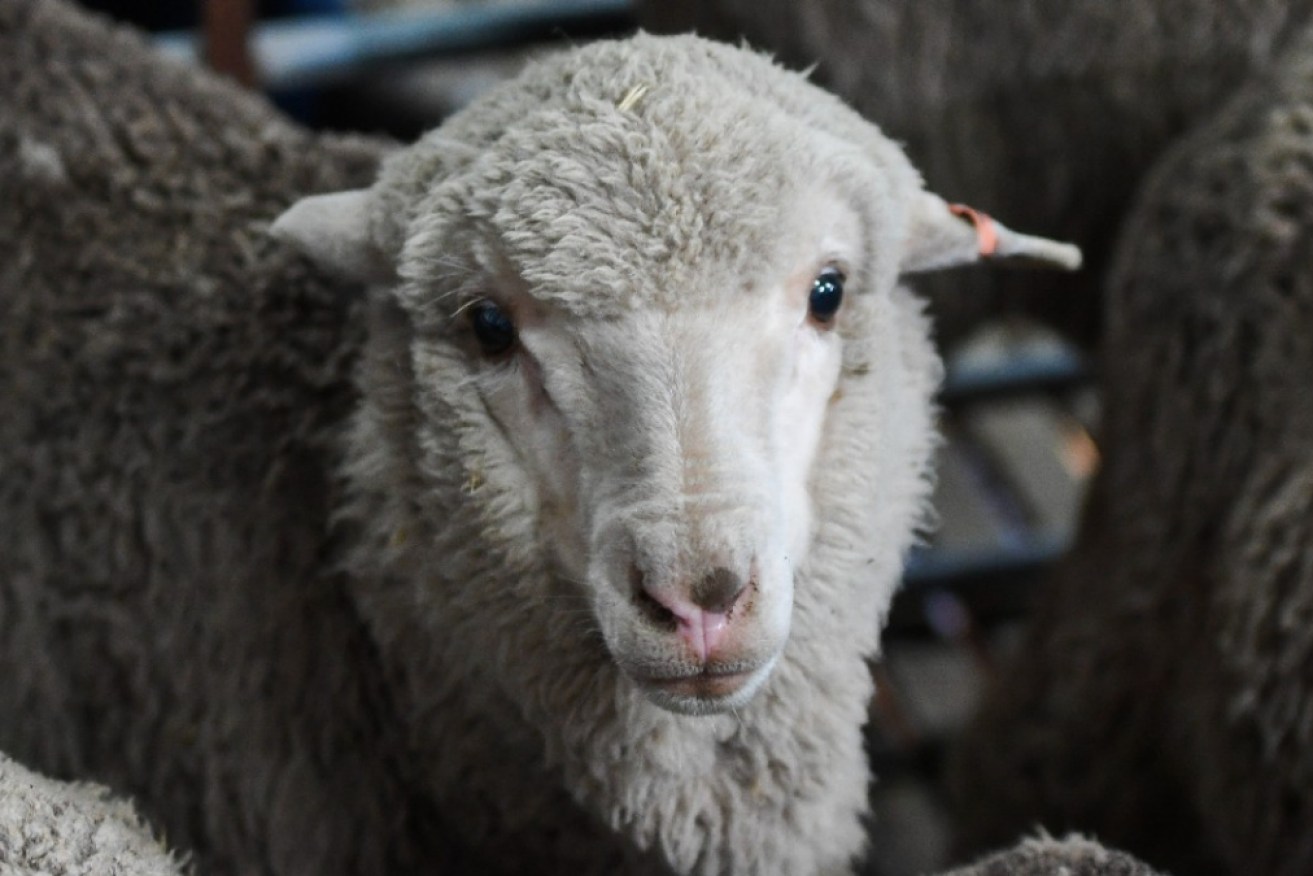Who’s your daddy? He died nearly 50 years ago, but his sperm is still wriggling


One of the lambs born from sperm frozen 50 years ago. Photo: Morgan Hancock, University of Sydney
Sperm donors could keep on making babies for decades long after they’ve died… if they follow the example of the late “Sir Freddie”, a merino ram whose sperm was taken out of the freezer after 50 years, and used to father a cluster of lambs.
They look like their dad, too – a more wrinkled form of Merino that went out of favour years ago because it made the animal vulnerable to flies laying eggs on its body.

Sir Freddie in more vigorous times. Photo: Walker family
University of Sydney researchers found the ancient sperm – from four long-dead rams – was as healthy and viable as samples that had been frozen for only 12 months.
Dead but still kicking
In fact, the numbers suggest the old fellas had a bit more kick in their tads than contemporary sires.
According to a statement from the university, out of 56 ewes inseminated with the ancient seed, 34 were successfully impregnated.
This compares to recently frozen semen from 19 sires used to inseminate 1048 ewes, of which 618 were successfully impregnated.
This gives a pregnancy rate of 61 per cent for the 50-year-old semen against 59 per cent for recently frozen sperm, actually a statistically equivalent rate – but who can begrudge a blue ribbon to Sir Freddie.
Great-great-great-great-great-great grandfather
If still alive, he’d be old enough to be great-great-great-great-great-great grandfather to his newborns.
“This demonstrates the clear viability of long-term frozen storage of semen. The results show that fertility is maintained despite 50 years of frozen storage in liquid nitrogen,” said Associate Professor Simon de Graaf from the Sydney Institute of Agriculture and School of Life and Environmental Sciences at the University of Sydney.

Associate Professor Simon de Graaf with Dr Jessica Rickard who tested the long-frozen sperm’s viability. Photo: Morgan Hancock, University of Sydney
“The lambs appear to display the body wrinkle that was common in Merinos in the middle of last century.”
The wrinkles were bred into sheep back then to maximise skin surface and increase the amount of wool the animal could grow. But it also made them vulnerable to infestation.
“That style of Merino has since largely fallen from favour as the folds led to difficulties in shearing and increased risk of fly strike,” said Dr de Graaf.
The findings are yet to be published, but Dr de Graaf believes they will provide a benchmark and resource when looking “at the genetic progress made by the wool industry over past 50 years of selective breeding. In that time, we’ve been trying to make better, more productive sheep,” he said.
The rams were of Ledgworth, Merryville and Boonoke genetics, famous names in the wool industry.
The Boonoke ram, “Sir Freddie” was born in 1959 and sold to Ledgworth owned by the Walker family in 1961 for 345 guineas – about $660 in today’s currency.
He died in the 1970s but lives on as part of what’s been described as a time capsule project. It was started in 1968, by the late Dr Steven Salamon – a world leader in sperm preservation, and something of a legend for how he survived a Siberian after World War II.
Dr Salamon died in 2017. In celebration of the semen’s 50th year and Dr Salamon’s 100th birthday, the semen was thawed and inseminated in ewes as part of the the 2018 Balmoral Sire Evaluation Group, a trial into leading sires suited for fine wool production in western Victoria.
Dr Jessica Rickard, a post-doctoral McCaughey Research Fellow in the Sydney Institute of Agriculture, did the original work to determine if the stored semen was viable for artificial insemination.
This involved thawing the semen, which is stored as small pellets in large vats of liquid nitrogen at -196 degrees.
Dr Rickard and her colleagues then undertook in vitro tests on the sperm quality to determine the motility, velocity, viability and DNA integrity of the 50-year-old sperm.
“We believe this is the oldest viable stored semen of any species in the world and definitely the oldest sperm used to produce offspring,” she said.








